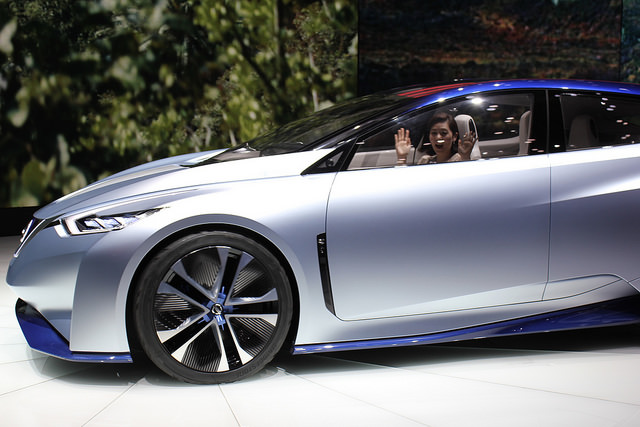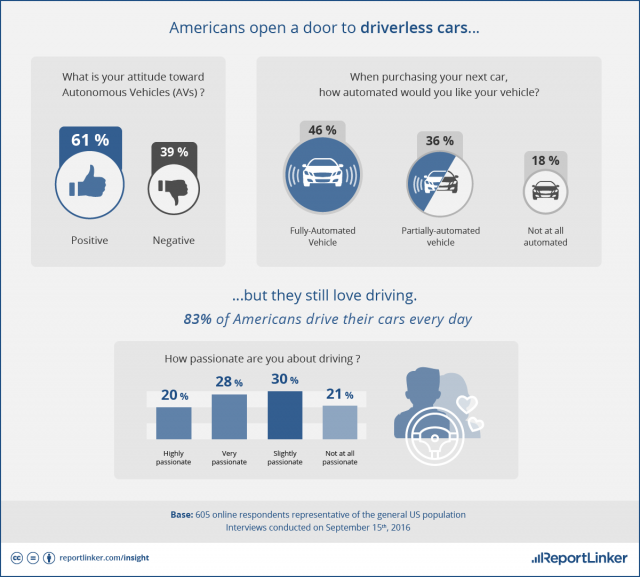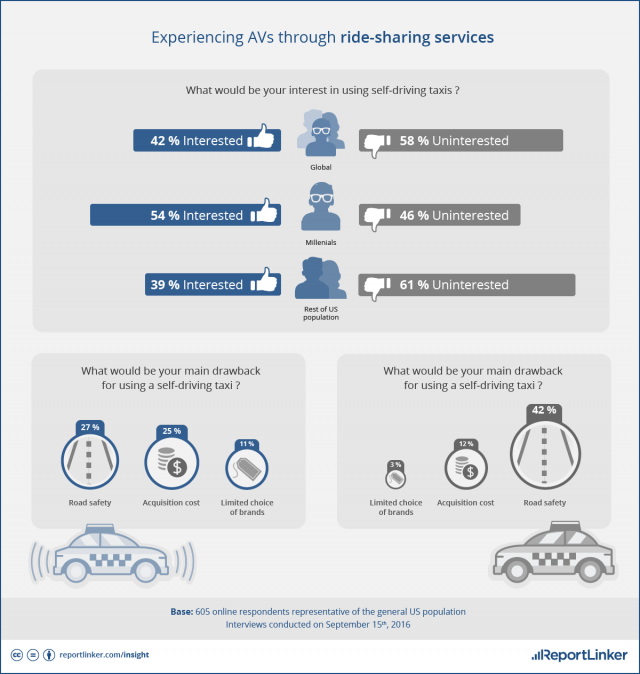
IHS Automotive released a forecast that several thousand autonomous vehicles will be deployed by 2020 and nearly 4.5 million vehicles will be in use by 2035. This is still a mere fraction of total car sales worldwide. However, this is a great milestone with exponential growth forecasts. Additionally, automakers have recently established partnerships with Lyft and Uber to manufacture autonomous vehicles as a part of their business strategy. However, Americans are notorious users of grand SUVs and trucks that only drive 8 miles per gallon. America has cities, such as Los Angeles, Atlanta and New York that are known for high traffic, accidents, and long stop-and-go commute times. Are they ready for autonomous vehicles?
A recent ReportLinker survey showed that, overall, Americans (61%), have a positive view towards autonomous vehicles and 82% would prefer either a fully-automated or partially-automated vehicle for their next car purchase. Only 18% of respondents would prefer a non-automated vehicle for their next purchase.
Though Americans are moving more towards autonomous vehicles, they still like driving. Forty-eight (48%) of respondents reported that they were ‘very’ or ‘highly’ passionate about driving while 51% reported being slightly or not passionate at all about driving. It is possible that Americans prefer to have an option of manual driving as opposed to full relying on ‘autopilot’ so to speak. Long distance drivers and truckers may also see a benefit in having both options at their disposal.
The grand question, however, is would Americans feel safe leaving the driving up to a computer. Sixty-three percent (63%) reported that they would not feel safe using a driverless car and it seems as though the vehicle may not be the issue, 36% of respondents reported that their main drawback was road safety. Eighteen percent (18%) reported that the vehicle may be too expensive to purchase and others reported that they would be uneasy about vehicle safety and the ability for the vehicle to be hacked.
Road laws would surely have to be upgraded to account for autonomous vehicles, lanes may have to be dedicated for such technology while driving among many more cars that are not autonomous. The next question around road safety and cost would be how the car insurance companies would handle claims of accidents between a manual and autonomous vehicle. Would the car or the driver be at fault? Would insurance be higher for autonomous vehicles or lower if they, theoretically, cause less accidents?
Though many respondents enjoy the idea of autonomous vehicles that would release the burden of driving, there are apparent concerns that would make the road to self-driving cars more gradual. The first step toward this outcome may be self-driving taxis. Millennial Americans were more likely to be interested in self-driving taxis than the remaining US population or the rest of the World. These same Millennials may also be the Uber generation, which could be the driving force behind the new ride-sharing business strategy to include autonomous vehicles in their fleet. For those who are apprehensive of self-driving taxis, the same concerns exist. That is, road safety and cost.
Self-driving vehicles are coming to America and the world. The matter is how and when they are integrated. Drivers are more apt to gradually reduce driving with increasingly more autonomous functions and even test out their feelings toward it through a ride-hailing service first. Yet, road safety is still a main concern that must be addressed before selling these vehicles on the global market.
Find a Home-Based Business to Start-Up >>> Hundreds of Business Listings.



















































